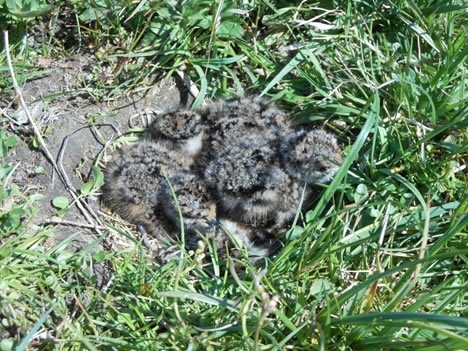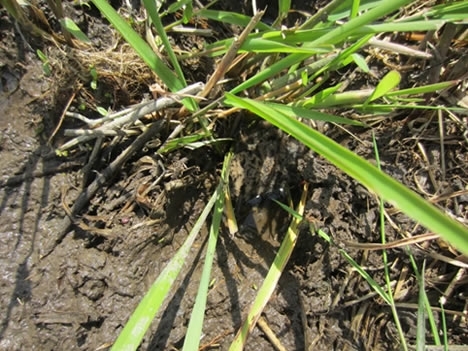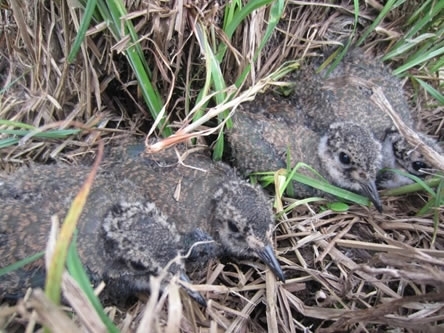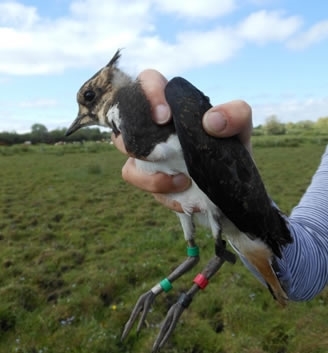 By Lizzie Grayshon, Waders for Real Project Ecologist
By Lizzie Grayshon, Waders for Real Project Ecologist
So far this spring the lapwing in the Avon Valley have had to endure a lot, with storms, heavy rainfall and even hail. However, they have shown no signs of giving up. Many of the early nests were on ground high enough to survive the rise in water and many have now hatched.
Lapwing will lay four eggs and after a 26-day incubation period these eggs hatch over the course of a day giving us a small window in which to find the chicks in the nest. Newly hatched chicks are easily distinguished as they still have their ‘egg tooth’. This is a hard white cap on the top of the bill, used to break into the air sack inside the egg and then to break the eggshell in order to hatch. The egg tooth is retained for around 24 hours after hatching.
 Within several hours of hatching these small chicks, weighing only around 15-17g, are able to start foraging by themselves. The parents keep a good watch on them with regular contact calls between females and their chicks. The first few days are critical for the chicks as they are unable to regulate their own body temperature and rely on the parent bird to brood them during periods of cold weather or rain.
Within several hours of hatching these small chicks, weighing only around 15-17g, are able to start foraging by themselves. The parents keep a good watch on them with regular contact calls between females and their chicks. The first few days are critical for the chicks as they are unable to regulate their own body temperature and rely on the parent bird to brood them during periods of cold weather or rain.
We use very small radio-tags to track the movement of lapwing chicks across the water meadows. The distance they travel is often quite surprising and chicks are able to cross the main channel of the river before they are able to fly. Parent birds will take their chicks to preferred foraging locations and the closer these are to the nest the better. These preferred locations are often shallow ditches and scrapes with some bare mud, but also patches of taller vegetation in which the chicks can hide from predators.


Lapwing chicks, as with many waders, rely on their camouflage in order to avoid capture by visual predators. If the female detects any danger, or is disturbed, she uses an alarm call that triggers the chicks to crouch and hide. This can be extremely effective and the chicks generally respond instantly to the female’s alarm calls, often hiding in shallow depressions.

Each year we take on several MSc students to help with fieldwork and this year we have Charlotte Pilcher, from Reading University, who will be radio-tracking tagged chicks to quantify their survival and to examine preferences for foraging locations.
Once the chicks are close to fledging, we aim to re-capture them to fit them with colour rings. Each individual gets a unique combination of colour rings along with a black flag identifier that is unique to the project. These will stay with them for the rest of their lives and it enables us to distinguish between individuals without needing to re-capture them.


As always, all catching, ringing and radio-tagging is done under strict licence by trained individuals.
Please support our vital wader research